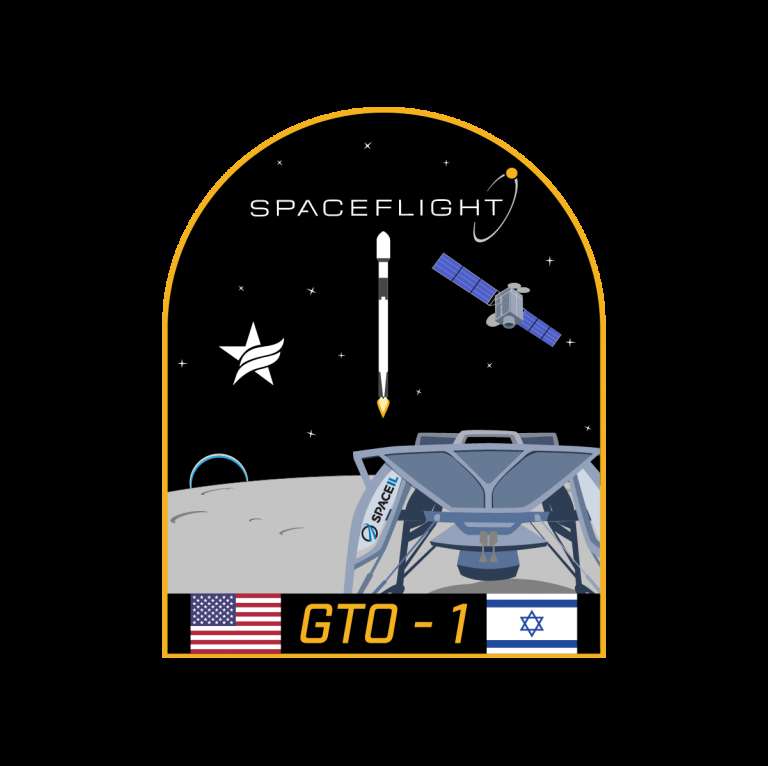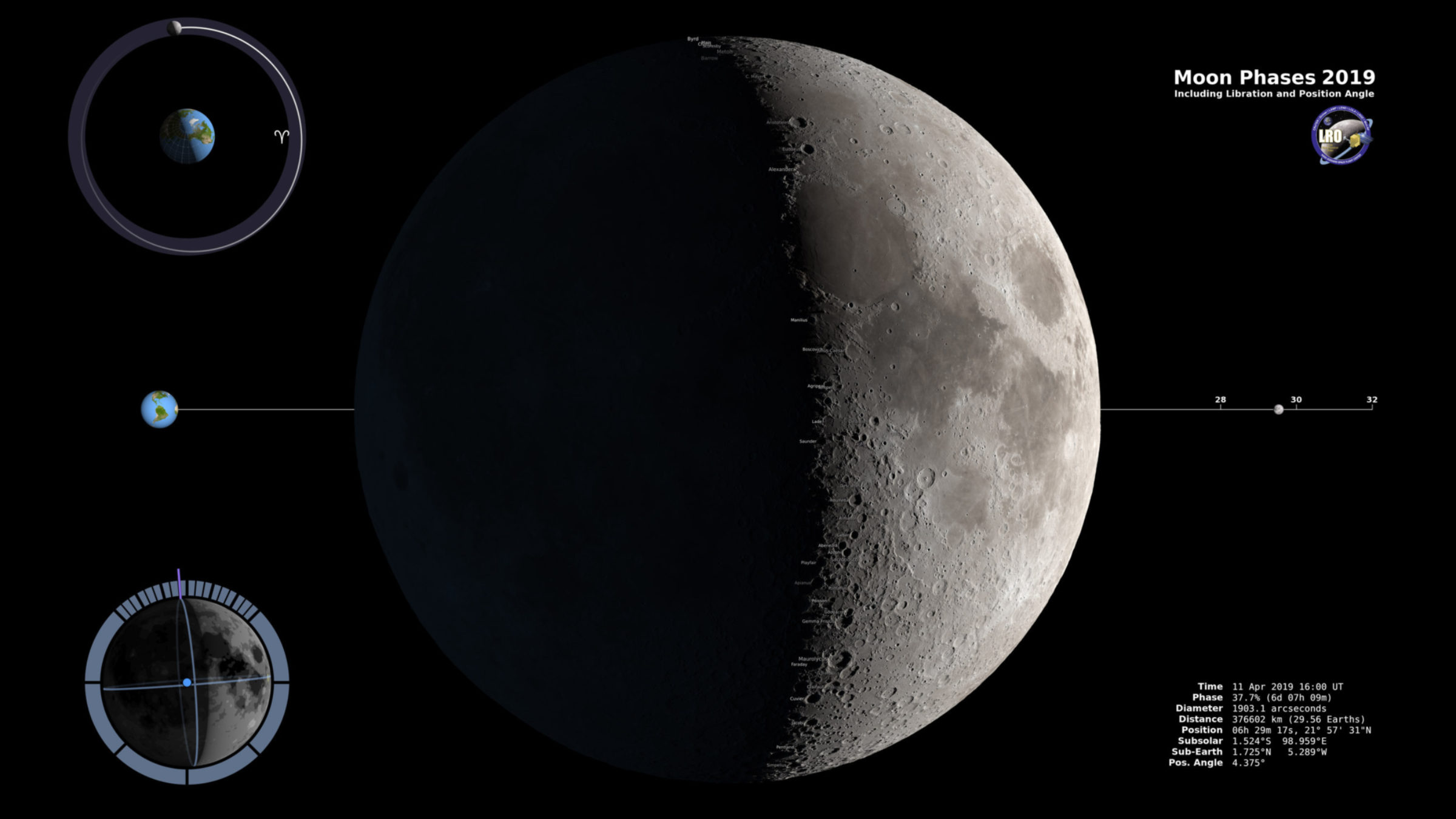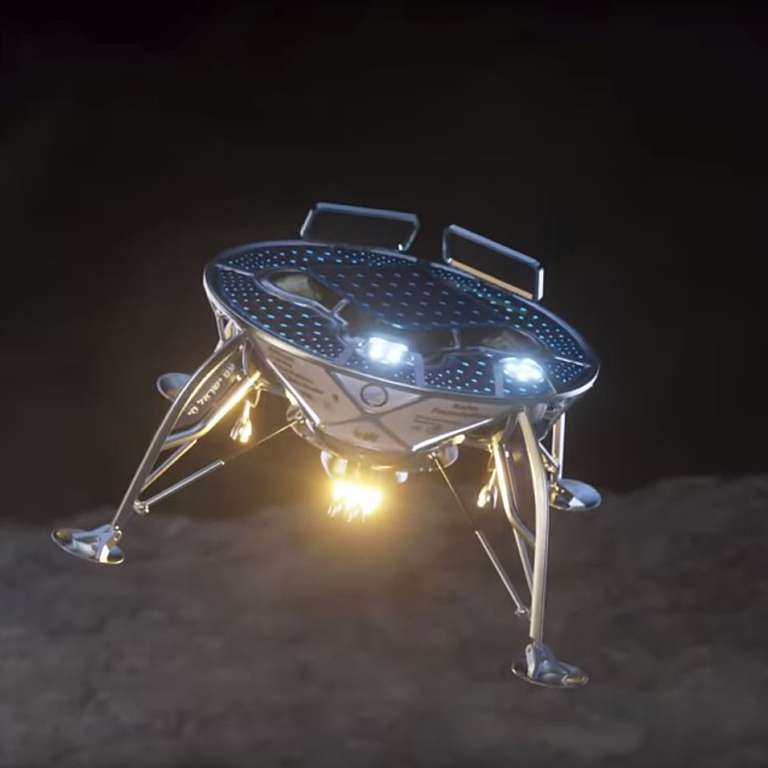Jason Davis • Feb 18, 2019
What to expect when Beresheet launches to (and lands on) the Moon
Launch day is almost here for Beresheet, a small lunar lander built by Israeli non-profit SpaceIL. Liftoff is currently set for 22 February at 01:45 UTC (21 February 20:45 EST), atop a SpaceX Falcon 9 rocket from Cape Canaveral, Florida.
If all goes well, Beresheet will push free from the Falcon 9 about a half an hour after launch, kicking off a 40-day journey to lunar orbit followed by another week before it actually lands. Thanks to some extremely helpful email exchanges with Yoav Landsman, a SpaceIL senior systems engineer, I was able to put together this handy guide detailing Beresheet's entire mission. Let's get started!
Beresheet1, a private Israeli Moon mission
Beresheet1 was a private Moon lander by Israeli non-profit SpaceIL that crashed on the surface in 2019.
Launch
As you can for any other Falcon 9 launch, you will be able to watch Beresheet launch live via SpaceX's website, and as a bonus, SpaceIL will show live video from a control room in Yehud, Israel on their Facebook page. Beresheet is one of two secondary payloads on the flight. The primary spacecraft is an Indonesian telecommunications satellite named Nusantara Satu. You'll see the satellite and mission also referred to as PSN-6; PSN stands for telecom company Pasifik Satelit Nusantara. The other secondary spacecraft is S5, a small Air Force Research Laboratory satellite that tracks objects in geosynchronous orbit.
From top to bottom, the Falcon 9 payload stack consists of Beresheet, S5, and then Nusantara Satu directly above the upper stage. That means Beresheet will get off the rocket first, which is unusual for a rideshare mission. When Nusantara Satu and S5 later detach from the Falcon 9, they'll stay hooked together, and Nusantara Satu will tow S5 to geosynchronous orbit. There, the two satellites will finally part ways. The rideshare arrangement is part of a new launch offering arranged by Spaceflight, which collectively calls its portion of the mission GTO-1. Naturally, there's a mission patch:

SpaceX will try to catch the Falcon 9 booster on their autonomous drone ship, Of Course I Still Love You. The reason the booster can't fly back to land is that SpaceX will try to squeeze every last drop of performance out of the Falcon 9, deploying the satellites into as high a geosynchronous transfer orbit as possible. The nominal orbit is 215 by 60,000 kilometers, and may be higher, depending on the Falcon 9's performance.
After Beresheet separates, about 34 minutes after liftoff, it will coast for 9.5 hours until it hits apogee, where it can execute an optional thruster burn to adjust its orbit. Beresheet has a single main engine that it will use for both orbital maneuvers and the Moon landing; smaller attitude control thrusters are used for everything else.
Landing
During the following 40 days, Beresheet will fly a series of "phasing loops" that raise the spacecraft's orbit until it can be captured by lunar gravity. There are 6 engine burns in total during this part of the mission, the last of which is a lunar orbit insertion, nominally on 4 April at 14:07 UTC (more on how a launch slip might affect these times in a moment).
Beresheet will spend 6 days circling the Moon, eventually lowering itself into a 15-by-197-kilometer orbit on 10 April. The orbit’s 15-kilometer perilune will be positioned right over Mare Serenitatis, where Beresheet will land. The first — and nominal — landing opportunity will happen on 11 April at 15:30 UTC, but SpaceIL has contingency windows and even contingency landing sites available if needed. In any case, just 20 minutes after starting its final descent, Beresheet will land. The earliest that would happen would be 11 April at 15:50 UTC, where it will be early morning at Mare Serenitatis.

Schedule
Here's a full schedule, starting after liftoff to landing. If the launch slips by just a few days, the lunar orbit insertion and landing times should stay the same, but the timing on the phasing loop maneuvers will be different. And even if the launch time holds, those maneuver times may end up slightly different. Note that the last four columns are target figures after the maneuver.
Post-launch update: This table is now outdated. SpaceX's initial orbit was higher than 60,000 kilometers, and Beresheet missed PM1 due to an unexpected engine reset.
| Event | Time (UTC) | Apoapsis (km) | Periapsis (km) | Orbit period (hr) | Revs |
|---|---|---|---|---|---|
| AM1 Optional apogee maneuver | 11:50 22 Feb | 59998 | 258 | 19 | 2 |
| AM2 Apogee maneuver | 02:24 24 Feb | 59997 | 599 | 19 | 1.5 |
| PM1 Perigee maneuver | 07:29 25 Feb | 123246 | 600 | 49 | 5 |
| PM2 Perigee maneuver | 11:18 07 Mar | 276126 | 462 | 152 | 2 |
| PM3 Perigee maneuver | 02:24 20 Mar | 396887 | 1447 | 258 | 0.14 |
| OPM Out of plane maneuver | 14:25 21 Mar | 391974 | 1422 | 253 | 1.3 |
| LOI1 Lunar orbit insertion | 14:07 04 Apr | 10012 | 289 | 14 | 1.5 |
| LOI1A Lunar orbit insertion | 11:29 05 Apr | 10002 | 247 | 14 | 2.5 |
| LOI2 Lunar orbit insertion | 22:48 06 Apr | 752 | 243 | 2.6 | 10 |
| LOI2B Lunar orbit insertion | 01:10 08 Apr | 245 | 200 | 2.2 | 29.5 |
| DM1 Descent maneuver | 17:00 | 197 | 15 | 2.0 | 14.5 |
What we'll see
Beresheet's camera system is a color (RGB), 8-megapixel, Imperx Bobcat B3320C, with Ruda optics. It has a 60-by-80-degree field of view, and a resolution of 2488 by 3312 pixels. That’s a nice wide field of view with plenty of pixels, similar (to the extent that they can be compared) to the human eye, or roughly equivalent to a DSLR with a 21 mm focal length.
The first images we see from that camera should be pretty pics taken while Beresheet is traveling to the Moon; SpaceIL hopes to download some through its ground station hub in Kiruna, Sweden. Once in lunar orbit, Beresheet will switch to NASA's Deep Space Network. NASA offered use of the DSN in exchange for installing a laser retroreflector and getting a copy of all the data from Beresheet's lone science experiment, a magnetometer. More pretty pictures and initial magnetometer data should come in through the DSN prior to landing.
During the final descent, Beresheet will shoot video — another Chang'e-like landing video, yay! — and take still images a few hours after touchdown. SpaceIL says they hope to have some images downloaded, processed and released within a few hours after landing.
The rest of the mission
Under the original terms of the $30 million Google Lunar XPrize, Beresheet would have hopped to a new location at least 500 meters using its main engine after landing. SpaceIL no longer plans to do this, preferring not to press their luck after having touched down on the Moon successfully. It will be a big deal for Israel to become the fourth country to soft-land on the Moon (following Russia, the United States, and China), and the team would rather have an intact lander bearing the Israeli flag rather than one that ends up in pieces after a risky second maneuver.
In any case, Beresheet will not be long-lived. The mission will nominally last 2 or 3 Earth days — not a terrible deal, considering the relatively cheap $100 million price tag. Recall that Beresheet is landing at sunrise, when temperatures are not too hot, and not too cold. Those benign conditions won't last for long; as the Sun rises, so will the temperature, which will cook the lander. The cameras are only designed to withstand temperatures up to 90 degrees Celsius in storage or 85 degrees while in use; lunar midday temperatures can top 100 degrees. If Beresheet manages to survive the heat, the lunar night will likely finish it off. Chang'e-4 recently recorded a low of -190 degrees Celsius on the far side. Nevertheless, it will be interesting to see how long the lander survives, and you can bet that radio enthusiasts on Earth will listen for its signals long after the primary mission ends.
Support our core enterprises
Your support powers our mission to explore worlds, find life, and defend Earth. You make all the difference when you make a gift. Give today!
Donate

 Explore Worlds
Explore Worlds Find Life
Find Life Defend Earth
Defend Earth



